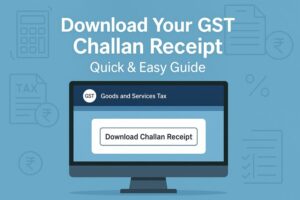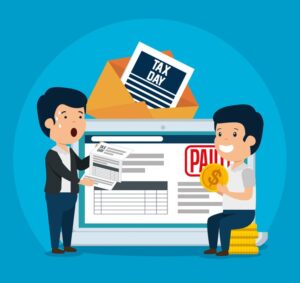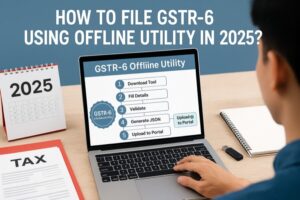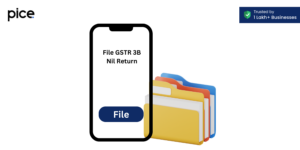What is the GST Declaration Form for Non-Enrollment?
- 13 May 25
- 7 mins
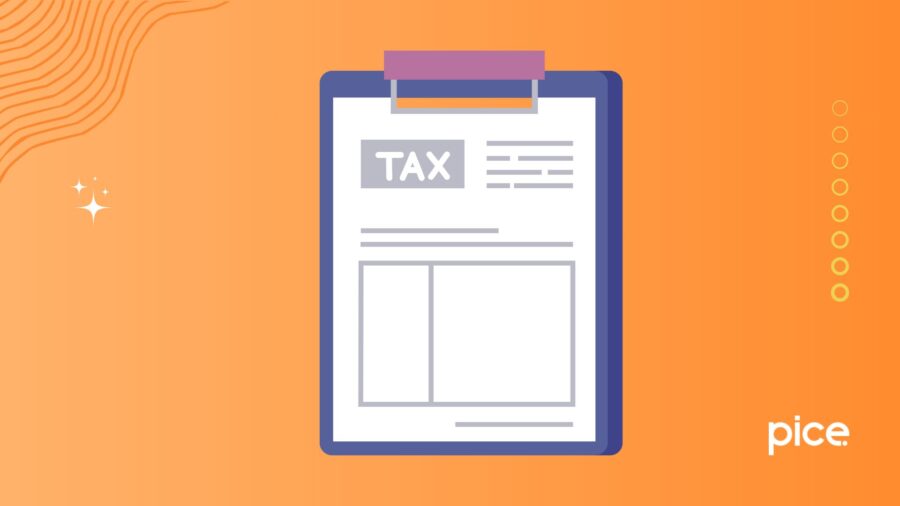
What is the GST Declaration Form for Non-Enrollment?
Key Takeaways
- The GST Non-Enrollment Declaration clarifies why GST isn’t charged by a supplier.
- It protects recipients from liabilities and ensures compliance documentation.
- Turnover below threshold, exempt goods/services, or reverse charge are common grounds.
- There is no fixed format, but indemnity clauses and disclosure are recommended.
- Penalties apply for delayed GST registration—₹10,000 or the tax evaded, whichever is higher.
The introduction of the Goods and Services Tax (GST) made crucial changes in the business entity. The initial stage of the business process is to obtain a supplier or recipient's GSTIN to guarantee the smooth flow of tax credits. Suppliers need to record business-to-business transactions accurately for GST returns, and recipients must ensure that they collect all required input tax credits.
In this article, we will provide you with all the details about what is GST declaration form for non-enrollment, its applicability, and its format.
GST Declaration Form Non-Enrollment
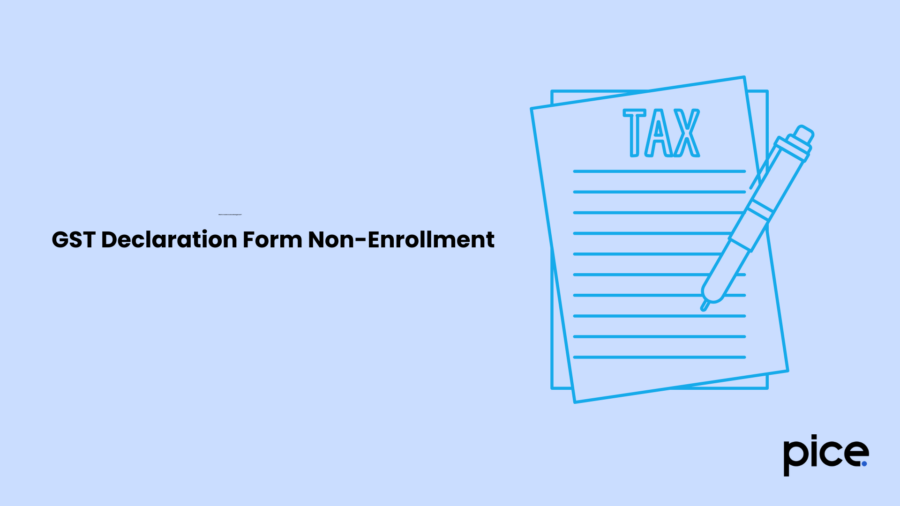
A GST Declaration Form for non-enrollment is a document submitted by a supplier to a recipient stating that they are not registered under the Goods and Services Tax (GST) for specific reasons. These reasons typically include having an aggregate turnover below the taxable limit (₹20 lakhs for most states, ₹10 lakhs for special category states), dealing exclusively in exempted goods or services, or being engaged in supplies fully liable to reverse charge.
This declaration informs the recipient why GST is not being charged on the supplied goods or services. It helps the recipient understand their obligations regarding input tax credit and the applicability of TDS/TCS provisions under GST.
The form usually includes details of the supplier, the reason for non-enrollment, and an undertaking to inform the recipient if GST registration is obtained in the future. Providing this declaration protects the recipient from potential penalties or losses due to the supplier's non-compliance.
Relevance of GST Declaration Non-Enrollment
Suppliers not under tax compliance use a GST declaration form for non-enrollment for numerous reasons. These include:
- They make any supplies that are entirely subject to reverse charges.
- Their aggregate turnover does not exceed the recommended threshold limit.
- They produce only supplies that are exempt from GST under GST regulation.
There are three common reasons for recipients to get a GST declaration for non-enrollment:
- To understand if input tax credit should be collected or not
- To determine whether GST’s Tax Deducted at Source (TDS) or Tax Collected at Source (TCS) provisions are applicable. For instance, before sending money to e-commerce suppliers, e-commerce operators must deduct tax at source. It is important to note that e-commerce operators do not need to deduct any tax if suppliers are not registered.
- To safeguard himself against fines or risks resulting from the supplier’s failure to make GST payments.
GST Declaration Letter Format for Non-Enrollment
The format below is an example for your reference, even though GST law does not specify a standard format for this disclosure. This format may vary based on the private or public sector. This format of declaration must be used by all applicants like partnership firms and proprietorship.
An indemnity clause should also be included in the supplier-receiver agreement. This can protect the receiver from losses brought on by the supplier's non-compliance or failure. A business entity that later registers must notify the recipient for declaration and obtain the recipient's GSTIN. This allows you to include the recipient's GSTIN in their invoices and filings.
Declaration of GST Non-Enrollment
Dear Sir/Madam,
Sub: Declaration of exemption from Central, State, UT, and Integrated Goods and Services Tax Act of 2017’s registration requirements
I/We……………………(The service provider’s or company’s name), declare that I/we are not registered under the 2017 Goods and Services Tax Act as (Choose and complete the following for appropriate reason)
-I/We deal in/supply category of goods or services …………………………………………(Define the type of goods or services offered) which the Goods and Services Tax Act of 2017 exempts.
-I/We hold an annual total turnover that is less than the taxable threshold outlined in the Goods and Services Tax Act of 2017.
-I/We are not yet registered under the Goods and Services Tax Act, 2017.
I/We hereby also confirm that if at any point during the fiscal year, I/we choose, mandate, or become subject to GST registration, I/we undertake to supply all necessary paperwork and data.
I/We request you to take this message as an announcement that registration is not necessary under the Goods and Service Tax Act, 2017.
I/We hereby also confirm that ………………………(Service recipient’s name) will not be responsible for any losses to me/us, because of any GST registration errors.
Signature of Authorised Signatory:
Name of Authorised Signatory:
Name of Business Entity:
Date:
Stamp/Seal of business entity:
Late Fines for GST Registration

The GST Act does not explicitly provide for a penalty for late registration by a taxable person or supplier. However, if GST authorities find that a person or supplier is applying for GST registration after the deadline, they must pay a penalty. This amount is ₹10,000 or the total amount of tax taxable person or supplier avoided, whichever is higher.
The CGST act also includes the penalty that a person or supplier who exceeds the GST registration threshold and becomes taxable faces, which is equal to the GST non-registration penalty. This cannot exceed 10,000 rupees or 10% of the tax owed by a non-registered party, whichever is higher.
Conclusion
It is essential to understand what is GST declaration form is for non-enrollment for business compliances. A provider who supplies goods not subject to GST under GST statute often submits this form. They can use a GST declaration for non-enrollment if they make any supplies subject to reverse charges.
GST law does not specify an authorisation format but requires uploading a PDF or JPG declaration for an appointment. GSTIN accepts files up to 1MB in size. You can also use a GST declaration for refund and other purposes. Applicants should have the list of invoices in hand for this.
💡If you want to streamline your payment and make GST payments via credit or debit card or UPI, consider using the PICE App. Explore the PICE App today and take your business to new heights.








